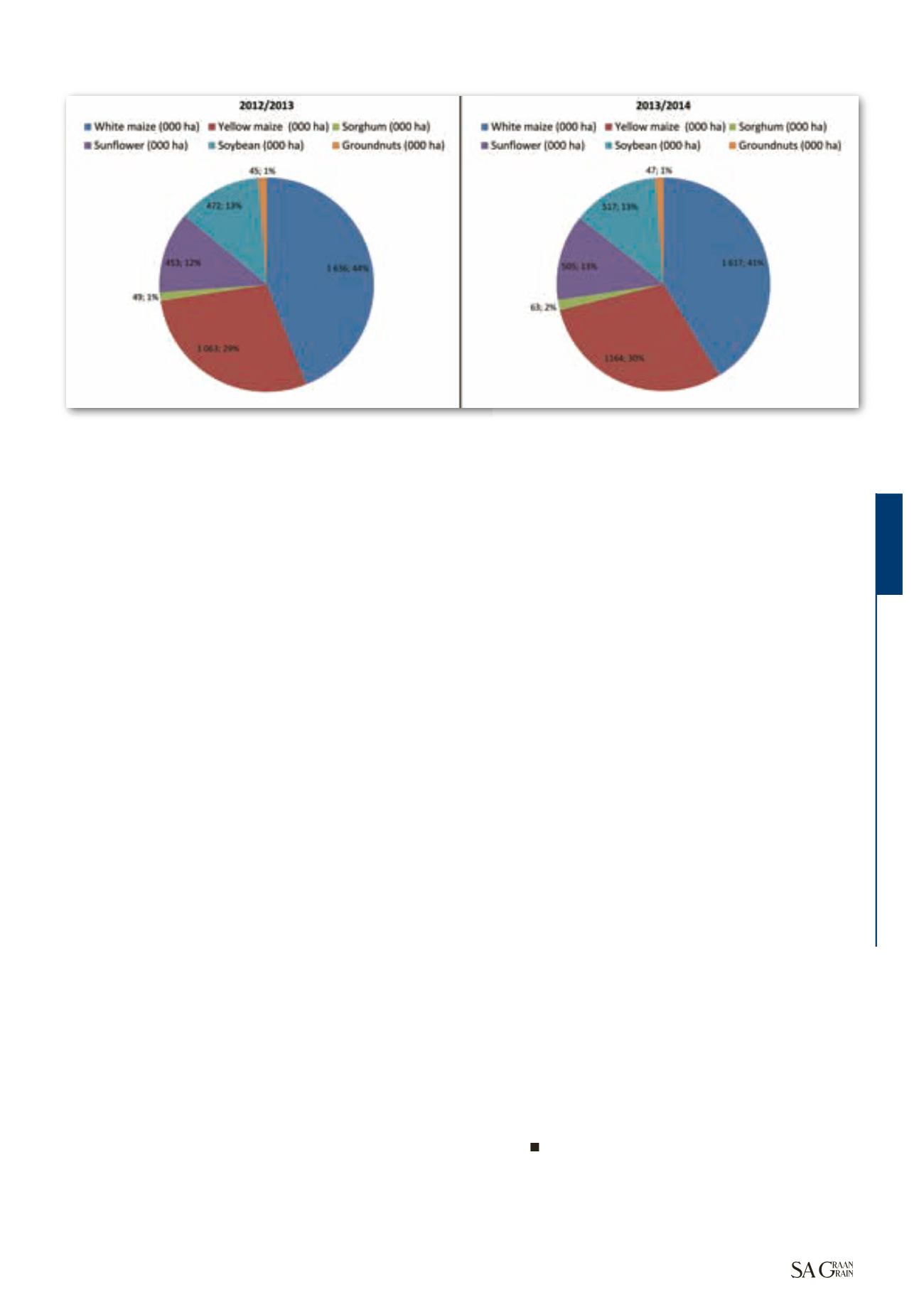
The FAO (2013) projects food insecurity to rise in Zimbabwe. About
2,2 million people will be without food between January and
March of 2014. In Lesotho, production has recovered, but the majority of
the population is still facing constrained food access.
With opportunities opening up for South African producers, there
are however some great challenges in doing business in the region;
infrastructure is noted to be among those (FAO, 2013). Civil wars in some
countries, such as the Democratic Republic of the Congo, Mali, Nigeria,
the Central African Republic, South Sudan etc are still seen as a barrier in
doing business in the region.
Domestic markets
Exchange rate
The rand has been extremely volatile, reaching levels of R10,40 against
the dollar; before gaining some strength and now trading around R9,91.
According to the Nedbank Group Economic Unit (2013), the significant
weakening of the rand value was pressurised by the announcement by
the US Federal Reserve to taper the bond purchases. However, the rand
took another turn (strengthened) when the US Fed decided not to taper
the stimulus. The rand value was also helped by the news that the strikes
in Anglo American Platinum had ended.
However, the Nedbank Group Economic Unit (2013) noted that at some
point the US Fed will start tapering the stimulus, probably before the end
of the year and that could again put pressure on the emerging markets.
The rand is still expected to weaken, owing to the large current account
and fiscal deficits, low economic growth, infrastructure constraints, high
unemployment and elevated inflation. Currently, the rand is 12% weaker
compared to a year ago and supports the domestic commodity prices.
Crude oil prices increased by 5% and contributed to the domestic costs
of dryland maize production to increase by 7% (Table 1).
South African summer grain and
oilseeds trends
Since 2010, commodity prices have been very unstable. White maize and
yellow maize prices have been volatile, but currently white maize prices
are trading at a premium above yellow maize; largely supported by the
increasing demand from neighbouring countries, such as Zimbabwe.
Sorghum prices are supported by the sorghum imports needed.
Sunflower and soybean prices have also been showing an increasing
price trend. The recently established soybean crushing plants increased
the demand for soybean. At the same time, the domestic production
and crushing of sunflower seed does not meet the domestic demand for
sunflower oil. In 2012, South Africa imported a record of 187 000 tons of
sunflower oil.
Hectares planted to summer grain oilseeds
In Southern Africa, the 2013 winter wheat harvest is expected to start in
October. Planting preparations for summer grain plantings have started
in South Africa. Trends show that South African producers expect that
white maize production may decrease; while soybean production is
expected to increase (
Graph 3
). Producers hope for sufficient rainfall as
dry weather conditions affects soil preparations.
The figures in Graph 3 show the changes in the area planted. Between
2012/2013 to the current planting season (2013/2014), the area planted to
white maize has been shrinking, from 44% to 41%. At the same time, the
area planted to yellow maize has been increasing, from 29% to 30%; with
the current planting season expected to have about 1 164 000 hectares
planted.
The area planted to sorghum has also shown a slight increase; for
2013/2014 it’s expected to increase slightly from 4 900 hectares to
63 000 hectares (Graph 3).
The area planted to sunflower is expected to increase from 12% to 13%; it
is currently expected to be 505 000 hectares for 2013/2014. For soybean,
the area planted is expected to increase from 472 000 hectares to
517 000 hectares for 2013/2014, largely supported by the increase in the
domestic demand from the crushing plants (Graph 3).
The area planted for groundnuts has declined over the years and is
expected to be around 45 000 hectares for 2013/2014 (Graph 3).
The domestic grain and oilseeds prices follow the domestic factors
of supply and demand, irrespective of the year-on-year decline in
international prices. It is expected that the factors, such as hectares
planted, expected rainfall and new demand for commodities such as
soybeans, may dominate the level of domestic prices compared to the
global factors of demand.
Keep price risk management strategies and the planting of alternative
crops in mind as export parity does not support the current price levels
for maize.
Further reading
FAO, 2013. Crop prospects and food situation, Rome: FAO.
GSA, 2013. Summergrains import and export parity prices, Pretoria: Grain SA.
IGC, 2013. Grain market report, Antwerp: International Grains Council.
Nedbank Group Economics Unit, 2013. Guide to the Economy, Johannesburg: Nedbank.
Graph 3: RSA hectares planted on summer grains and oilseeds.
Source: Grain SA, 2013
Market overview
Markets
85
November 2013
An overview of summer grains and oilseeds
Continued from page 82


